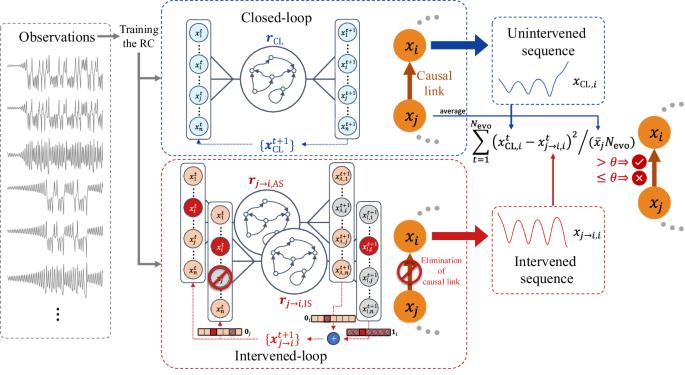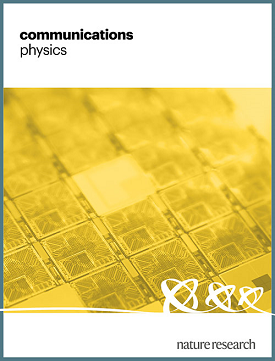通过干预水库计算检测动态因果关系
IF 5.4
1区 物理与天体物理
Q1 PHYSICS, MULTIDISCIPLINARY
引用次数: 0
摘要
自然界和人类社会存在大量复杂的动态现象,需要复杂的分析工具来理解和解释。在对照实验不可行或不道德的情况下,通过观察时间序列数据进行因果分析对于理解复杂系统至关重要。尽管基于数据的因果发现方法已被广泛应用,但仍然缺乏更符合因果关系直观定义的直接方法,即对某一要素的干预是否会导致其他要素的后续发展发生变化。为了解决这个问题,我们提出了干预水库计算(IRC)方法,其基础是构建一个原始系统的神经网络复制品,并对其进行干预。这种方法可以在底层系统的数字双胞胎中进行受控试验,从而观察干预后的演变。模拟数据和真实世界数据被用来测试我们的方法,并证明其在推断因果网络方面的准确性。鉴于因果关系在理解复杂动力学中的重要性,我们预计,IRC 可以成为各学科从观测数据中解读自然系统内在机制的有力工具。理解复杂系统需要通过观测时间序列进行因果分析,但目前仍缺乏符合因果关系直观定义的直接方法。在这里,作者利用水库计算来复制底层系统并对其进行干预,从而实现对照试验和准确的因果发现。本文章由计算机程序翻译,如有差异,请以英文原文为准。

Detecting dynamical causality via intervened reservoir computing
An abundance of complex dynamical phenomena exists in nature and human society, requiring sophisticated analytical tools to understand and explain. Causal analysis through observational time series data is essential in comprehending complex systems when controlled experiments are not feasible or ethical. Although data-based causal discovery methods have been widely used, there is still a lack of direct ways more aligned with the intuitive definition of causality, i.e., whether interventions on one element lead to changes in the subsequent development of others. To solve this problem, we propose the method of intervened reservoir computing (IRC) based on constructing a neural network replica of the original system and applying interventions to it. This approach enables controlled trials, thus observing the intervened evolution, in the digital twins of the underlying systems. Simulated and real-world data are used to test our approach and demonstrate its accuracy in inferring causal networks. Given the importance of causality in understanding complex dynamics, we anticipate that IRC could serve as a powerful tool for various disciplines to decipher the intrinsic mechanisms of natural systems from observational data. Understanding complex systems requires causal analysis via observational time series, yet there is still a lack of direct ways aligned with the intuitive definition of causality. Here, the authors use reservoir computing to replicate the underlying system and apply interventions to it, enabling controlled trials and accurate causal discovery.
求助全文
通过发布文献求助,成功后即可免费获取论文全文。
去求助
来源期刊

Communications Physics
Physics and Astronomy-General Physics and Astronomy
CiteScore
8.40
自引率
3.60%
发文量
276
审稿时长
13 weeks
期刊介绍:
Communications Physics is an open access journal from Nature Research publishing high-quality research, reviews and commentary in all areas of the physical sciences. Research papers published by the journal represent significant advances bringing new insight to a specialized area of research in physics. We also aim to provide a community forum for issues of importance to all physicists, regardless of sub-discipline.
The scope of the journal covers all areas of experimental, applied, fundamental, and interdisciplinary physical sciences. Primary research published in Communications Physics includes novel experimental results, new techniques or computational methods that may influence the work of others in the sub-discipline. We also consider submissions from adjacent research fields where the central advance of the study is of interest to physicists, for example material sciences, physical chemistry and technologies.
 求助内容:
求助内容: 应助结果提醒方式:
应助结果提醒方式:


